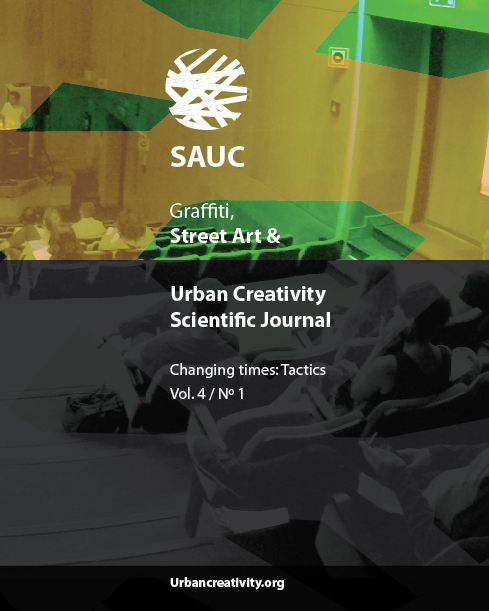Graffiti on trains, photography and Subterráneos
DOI:
https://doi.org/10.25765/sauc.v4i1.135Abstract
When contemporary graffiti first emerged in the New York of the 1970s, the game was about making your name travel around the city by painting it on the sides of subway cars, a particularly visible surface. Original graffiti writers did not need to photograph their works: contact with their audience was direct, and painted cars could circulate for months or even years before the graffiti was removed. In the eighties, many European adolescents, myself among them, began to reproduce this practice, but in our cities, painted cars were rarely allowed to go into circulation.
Unlike the original writers, we did not paint trains to make our names visible. In most cases we knew that the trains would only be seen by the workers who cleaned them. We painted the trains mostly because of tradition, to reproduce a phenomenon that fascinated us. Thus, to prove our accomplishments, we needed to document the pieces after completing them. For European graffiti writers, photography was, from the very beginning, the main medium.
Downloads
Global Statistics ℹ️
|
176
Views
|
0
Downloads
|
|
176
Total
|
|
Downloads
Published
How to Cite
Issue
Section
License
Those authors who publish in this journal accept the following terms:
-
Authors retain copyright.
-
Authors transfer to the journal the right of first publication. The journal also owns the publishing rights.
-
All published contents are governed by an Attribution-NoDerivatives 4.0 International License.
Access the informative version and legal text of the license. By virtue of this, third parties are allowed to use what is published as long as they mention the authorship of the work and the first publication in this journal. If you transform the material, you may not distribute the modified work. -
Authors may make other independent and additional contractual arrangements for non-exclusive distribution of the version of the article published in this journal (e.g., inclusion in an institutional repository or publication in a book) as long as they clearly indicate that the work was first published in this journal.
- Authors are allowed and recommended to publish their work on the Internet (for example on institutional and personal websites), following the publication of, and referencing the journal, as this could lead to constructive exchanges and a more extensive and quick circulation of published works (see The Effect of Open Access).













